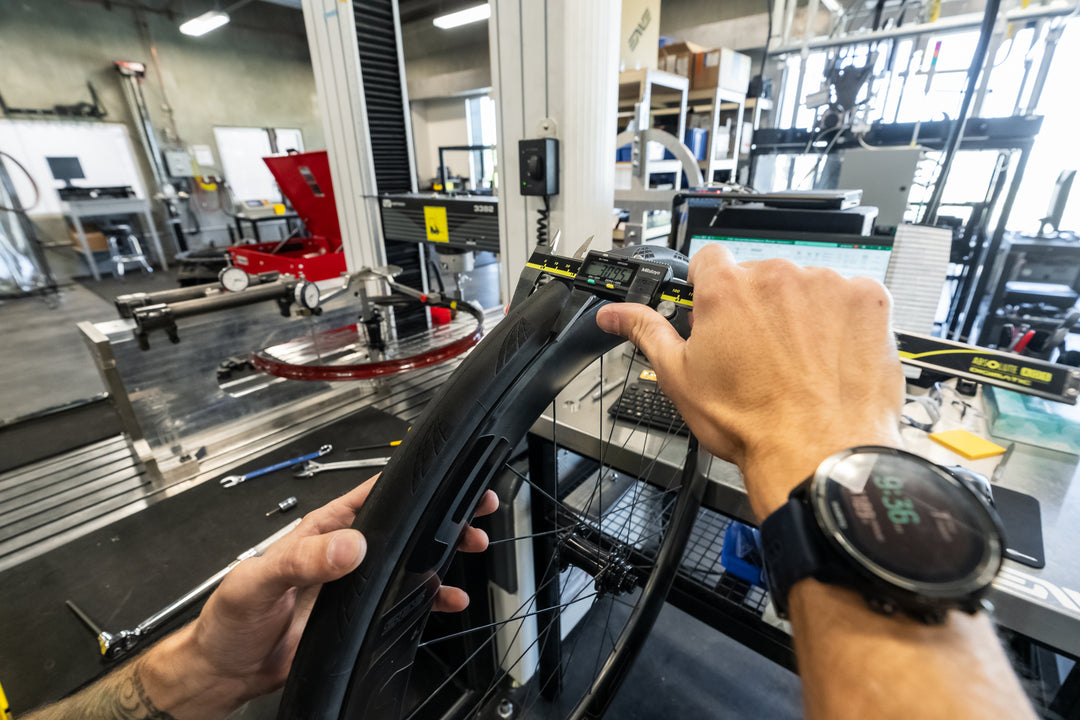What the Boost is going on?
The Changing Landscape of Mountain Bike Wheel and Axle Standards
Been shopping for a new bike or wheels lately? If so, you may have been left feeling like you need a degree in wheel and axle terminology. Let’s take a look at these emerging standards in the mountain bike world so that you are well armed and prepared.
The mountain bike industry has been on a bigger-is-better trend. Why? It basically comes down to the physics of creating a bike that is light and nimble enough to climb all day like the Cannondale Factory Racing Team, but also burly enough to descend like the Commencal DH Team. Good traction, good kinematics and great strength. The one-bike quiver.
What is Boost?
Boost is the modern axle platform which all performance mountain bike frame and fork manufacturers abide by. ‘Boost’ is an upgrade from the old standard which widens the rear axle by 6mm and the front axle by 10mm, putting the rear at 148mm and the front at 110mm. Boost was widely adapted around 2014, with manufacturers taking on the standard over time. Check with your frame and fork manufacturer to determine which standard your bike uses if you have a bike made around this time.
What is Superboost?
Superboost is another modern axle platform that some bike frame manufacturers choose to use. It applies specifically to the rear axle, and is measured at 157mm. While this is similar to DH spacing of 157mm, the brake spacing is different, to take advantage of wider flange bracing angles for an even stiffer wheel setup. Typically, you’ll see this setup on larger travel bikes, or bikes looking to create more tire clearance. Check with your frame manufacturer to determine if this is the axle platform on your bike. Pivot Cycles was the first to implement this standard and all their current bike models employee it today.
What is DH Spacing?
DH spacing is set at 157mm for the rear axle. While this is the same as superboost, the brake spacing is slightly different. DH Spacing was created for the largest travel Downhill mountain bikes that required space for larger tires, more travel, and bigger brakes. Check with your frame manufacturer to determine if this is the axle platform on your bike.
XC | Trail | Enduro
Boost Spacing is 15 x 110mm Front & 12 x 148mm Rear
Superboost Spacing is 15 x 110mm Front & 12 x 157mm Rear
Downhill
DH Non Boost Spacing is 20 x 110mm Front & 12 x 157mm Rear
DH Boost Spacing is 20 x 110mm Front & 12 x 157mm Rear
So what does Boost do for you?
A wider axle means that the spacing between your hub’s flanges can be increased. By increasing the width of the hub flanges you can improve the bracing angles of the spokes in the wheelbuild. Ultimately you can build a stronger, stiffer, and ultimately more efficient wheel.
What else?
By increasing the width of the bike frame’s chainstays the manufacturers have the ability to shorten the chainstays without sacrificing tire clearance. Optimally short chainstays allow your weight to be positioned closer to the rear axle which means the bike will generally feel far more nimble, be easier to manual, and climb more confidently. Likewise, boost spacing allows for more tire clearance and therefore, traction.
What about the front end?
The advantages of a boosted front fork are isolated to achieving better wheel geometry and additional tire clearance. More tire clearance means the ability to run wider tires, which can be run at lower pressures for more cornering traction and confidence. This makes the M635 and M735 wheels more appealing with their 35mm internal widths.
ENVE’s take on the New Standard
Increased wheel stiffness at a tiny weight penalty is always great news for us. Boost is here to stay… At least until the next standard is developed. All of ENVE’s M Series mountain wheel offerings and the AM30 wheelset are all available with boost hub options.
If you have any questions regarding mountain wheel configuration or want help configuring a new ENVE wheelset for your new bike, don’t hesitate to contact ENVE Customer Service at 1-866-358-2869 or Support@ENVE.com.






